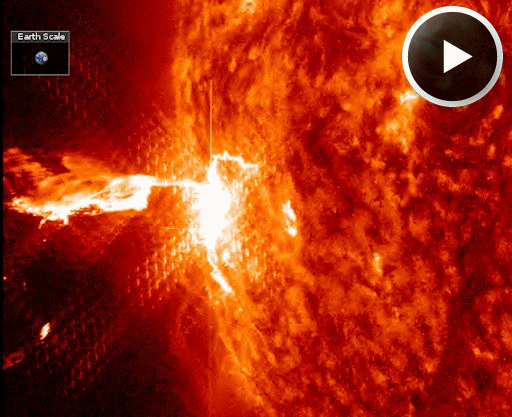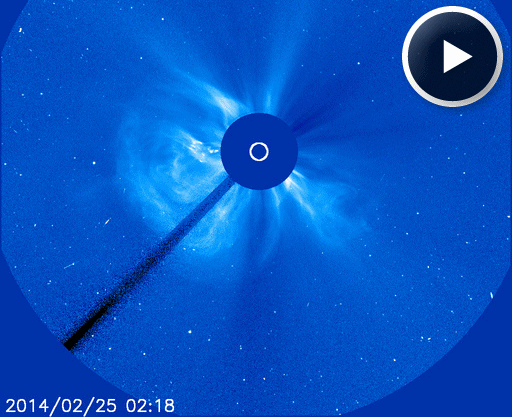by Miriam Kramer, Staff Writer | February 25, 2014 11:50am ET
The sun fired off a major solar flare late Monday (Feb. 24), making it the most powerful sun eruption of the year so far and one of the strongest in recent years.
The massive X4.9-class solar flare erupted from an active sunspot, called AR1990, at 7:49 p.m. EST (0049 Feb. 25 GMT). NASA's Solar Dynamics Observatory captured high-definition video of the monster solar flare. The spaceecraft recording amazing views the solar flare erupting with a giant burst of plasma, called a coronal mass ejection, or CME.
Earth isn't in danger from the latest eruption of space weather activity, according to officials with Spaceweather.com, which tracks space weather and stargazing events. Sunspot AR1990 (previously named AR1967) is located on the southeastern limb of the sun, pointed away from Earth. This is the third time this sunspot has rotated onto the Earth-facing side of the sun. [Photos: The Biggest Solar Flares of 2014]
A giant solar flare, an X4.9-class sun storm,
erupts from the sun at 00:49 GMT on Tuesday, Feb. 25 (7:49 p.m. Monday,
Feb. 24 EST). This image of the flare was captured by NASA's
sun-watching Solar Dynamics Observatory.
Credit: NASA/SDO
Credit: NASA/SDO
Read More Here
.....
Space Weather
by Dr. Tony Phillips.X-FLARE!
Long-lived sunspot AR1967 returned to the Earthside of the sun on Feb. 25th and promptly erupted, producing an X4.9-class
solar flare. This is the strongest flare of the year so far and one of
the strongest of the current solar cycle. A movie from NASA's Solar
Dynamics Observatory shows the explosion hurling a loop of hot plasma
away from the blast site:
Coronagraphs onboard the
Solar and Heliospheric Observatory tracked this material as it raced
away from the sun, eventually forming a bright CME, pictured below..
Radio emissions from shock waves at the leading edge of the CME suggest
an expansion velocity near 2000 km/s or 4.4 million mph. If such a
fast-moving cloud did strike Earth, the resulting geomagnetic storms
could be severe. However, because its trajectory is so far off the
sun-Earth line, the CME will deliver a no more than a glancing blow.
NOAA forecasters expect a weak impact late in the day on Feb. 26th.
The source of the eruption
is long-lived sunspot AR1967, now beginning its third trip across the
Earthside of the sun. This region was an active producer of flares
during its previous transits, and it looks like the third time will be
no different. By tradition, sunspots are renumbered each time they
return, so AR1967 has been given a new name, AR1990. After today, that
is what we will call it.....










No comments:
Post a Comment
Hello and thank you for visiting my blog. Please share your thoughts and leave a comment :)